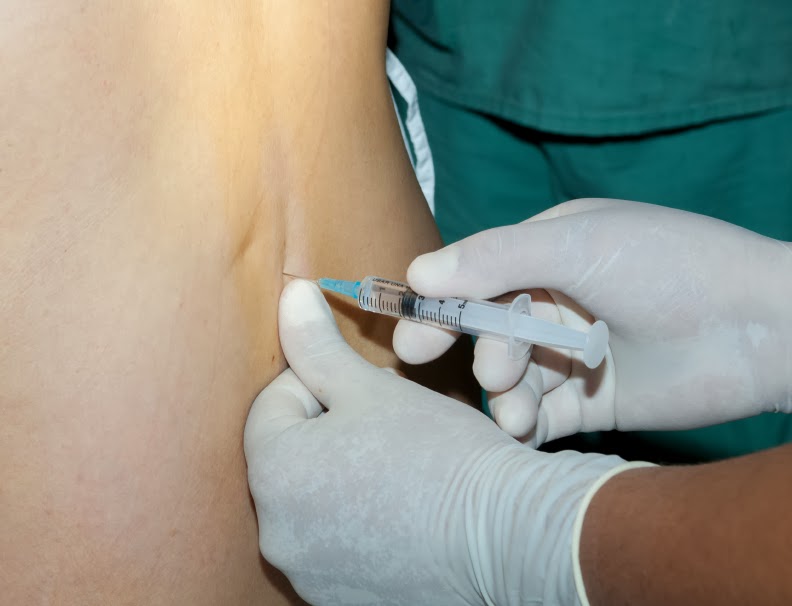Author: Nick Pettit, OMS 2
Ohio University Heritage College of Osteopathic Medicine
Proper Lumbar Puncture (LP) technique is critical for both obtaining a pure CSF sample as well as minimizing patient discomfort and post LP side effects. Herein, a summary of the proper technique will be described.
- Performed either lateral recumbent or upright
- Use proper sterile technique (face mask, etc)
- Choose needle type (cutting vs. atraumatic)
- Find L4 via palpation with iliac crests
- Palpate spinous processes of L3, L4, and L5
- Spinal needle can be placed at L3/4 or L4/5 interspace
- Place patient in fetal position with lower lumbar spine flexed
- Clean overlying skin with alcohol and povidone-iodine or chlorhexidine (allow to dry) [2-4]
- Place a sterile drape over the site
- Apply local anesthesia
- Using 20-22 gauge needle into lumbar intervertebral space
- Advance needle slowly, angling toward the head
- Bevel of needle should be positioned toward the flanks
- Choose desired technique for advancing needle [5-7]
- Once CSF flows, instruct the patient to slowly straighten the legs
- Measure the CSF pressure
- Collect 8-15 mL of fluid in sterile plastic tubes (up to 40 can be removed)
- Replace stylet before removing needle
Indications
Urgent:
- CNS infection
- Subarachnoid hemorrhage in a patient with negative CT scan
Nonurgent:
- Idiopathic intracranial hypertension
- Normal pressure hydrocephalus
- Multiple sclerosis
- Paraneoplastic syndromes
- Guillian-Barre syndrome
Contraindications
- Possible raised intracranial pressure
- Thrombocytopenia or other bleeding diathesis
- Suspected spinal epidural abscess
Complications
- Post LP headache (10%-30%)
- Infection
- Bleeding (consider talking with hematologist when patients are anticoagulated or have a known coagulopathy)
- Minor neurological symptoms
- Back pain
- Cerebral herniation
Summary
Proper technique for the LP is critical and using the LP can be extremely useful in the diagnosis of infections, malignancies, as well as hemorrhages. Keep in mind hospital polices as various methodologies are regulated at the institutional level. Lastly, the side effects of an LP can be potentially fatal, and thus such procedures should not be ordered unless the benefits outweigh the risk.
References
1. UpToDate
2. Scott M, Stones J, Payne N. Antiseptic solutions for central neuraxial blockade: which concentration of chlorhexidine in alcohol should we use? Br J Anaesth 2009; 103:456; author reply 456.
3. Hebl JR. The importance and implications of aseptic techniques during regional anesthesia. Reg Anesth Pain Med 2006; 31:311.
4. Arendt KW, Segal S. Present and emerging strategies for reducing anesthesiarelated maternal morbidity and mortality. Curr Opin Anaesthesiol 2009; 22:330.
5. Ellenby MS, Tegtmeyer K, Lai S, Braner DA. Videos in clinical medicine. Lumbar puncture. N Engl J Med 2006; 355:e12.
6. Agrawal D. Lumbar puncture. N Engl J Med 2007; 356:424; author reply 425.
7. Baxter AL, Fisher RG, Burke BL, et al. Local anesthetic and stylet styles: factors associated with resident lumbar puncture success. Pediatrics 2006; 117:876.

